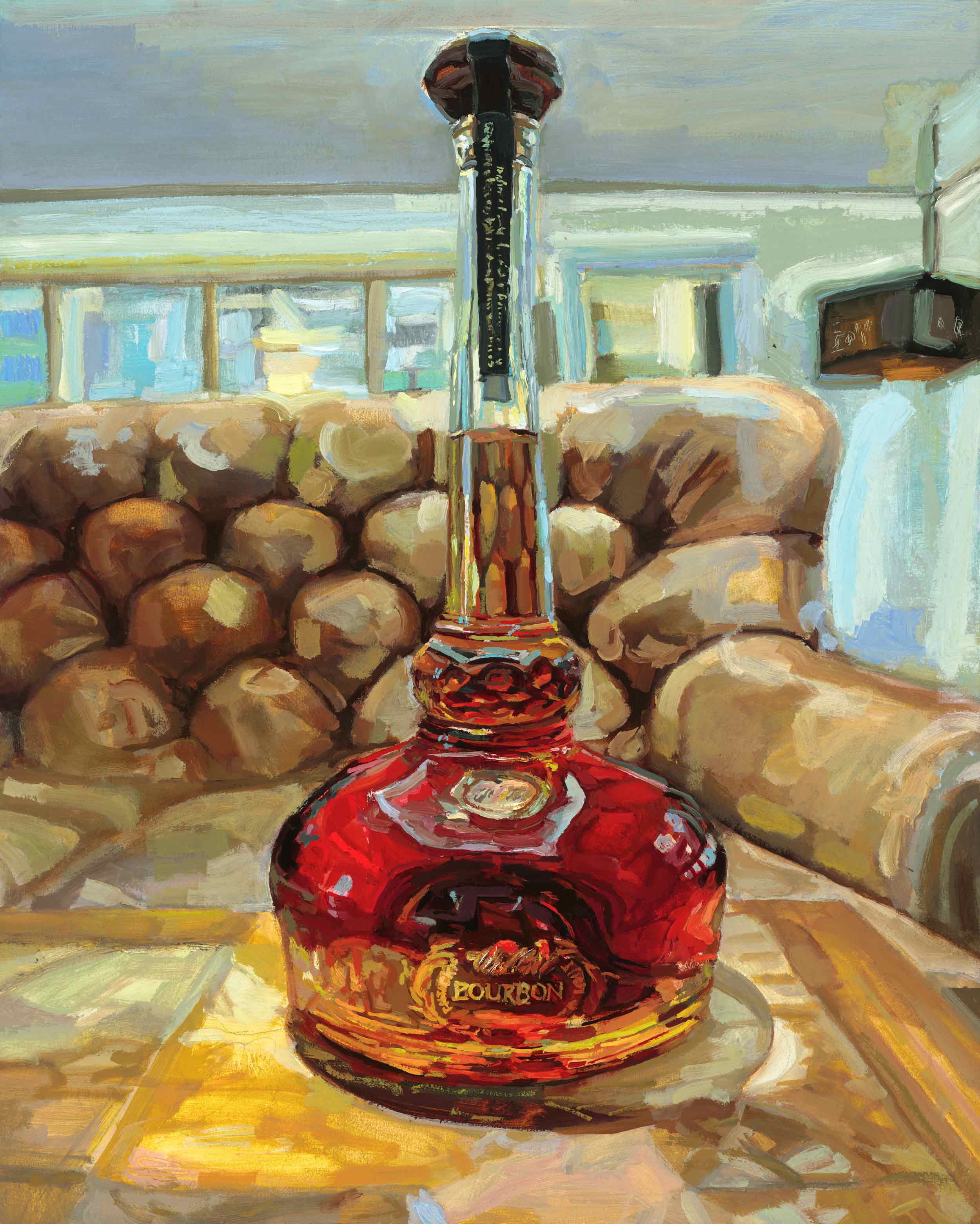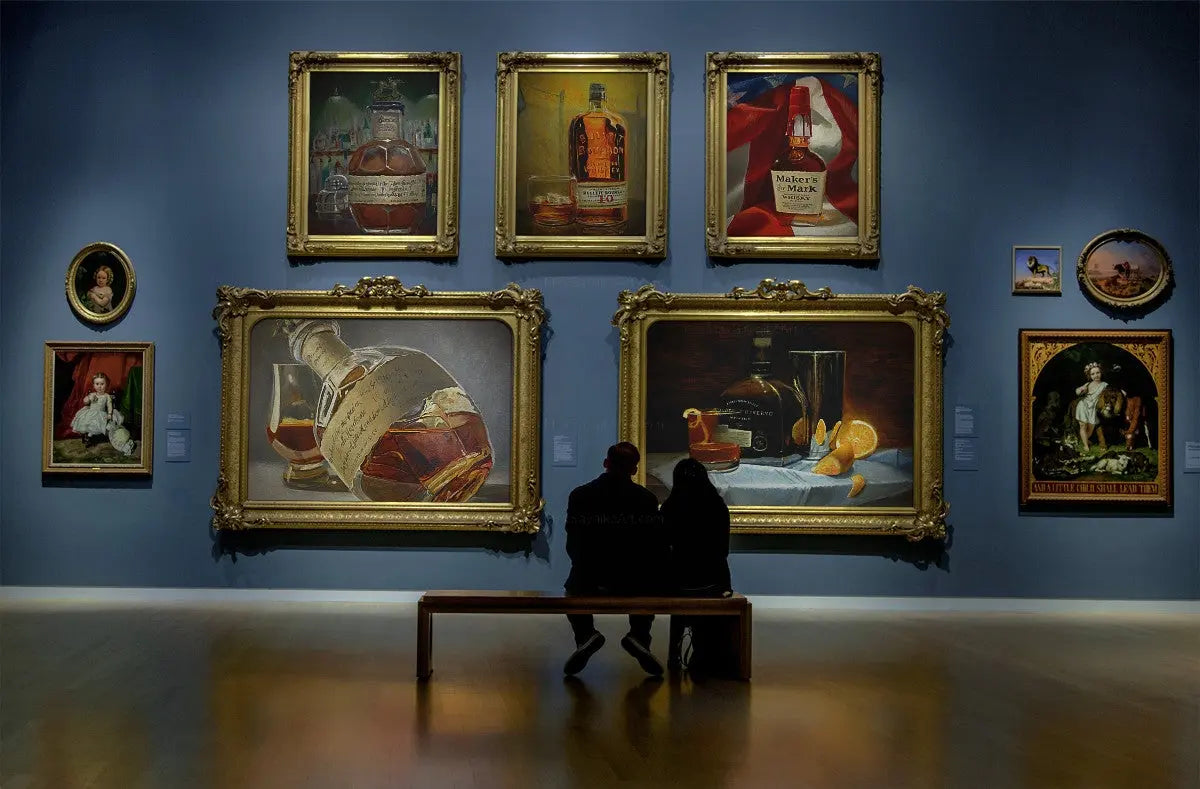Bourbon Art in Contemporary Culture: Where Tradition Satisfies Technology
Bourbon Art in Contemporary Culture: Where Tradition Satisfies Technology
Blog Article
The Significance of Whiskey Art in Celebrating Heritage and Workmanship in the Beverage Industry
The complex connection in between scotch art and the event of heritage and craftsmanship within the drink industry can not be overemphasized. Via attentively created bottles and tags, scotch brands envelop their historic roots and the artisanal skills that specify their production techniques.
The Historic Roots of Whiskey
At the heart of bourbon's attraction lies a rich tapestry of historical roots that trace back to old people. The beginnings of scotch can be linked to the purification methods of the Sumerians and Babylonians around 2000 BCE, where very early kinds of fermented grain beverages began to arise. It was in the Middle Ages that the art of purification progressed considerably, particularly in Ireland and Scotland, leading to the development of whiskey as we recognize it today.
The term "whiskey" itself stems from the Gaelic word "uisce beatha," implying "water of life." This expression highlights the cultural significance of whiskey in Celtic societies, where it was frequently related to routines, celebrations, and public bonding. By the 15th century, distillation ended up being an identified craft within reclusive areas, paving the way for the facility of lawful distilleries.
As profession routes broadened, scotch's appeal expanded, going beyond local boundaries and capturing the interest of connoisseurs worldwide. Limited Edition. This historic journey shows not only the craftsmanship behind scotch production however likewise its important function in social and social contexts, noting it as a substantial drink throughout background
Artistic Expression in Branding
Bourbon branding stands as a compelling intersection of artistry and business, where visual identification plays a vital role fit consumer perception. The aesthetic appeals of whiskey tags, product packaging, and advertising materials show not only the brand's tale but additionally its core values and heritage. Via imaginative expression, distilleries share a story that resonates with consumers, stimulating emotions and triggering connections.
The use of shade, typography, and images in branding serves to set apart items in a saturated market. Typical themes may stimulate a feeling of credibility and workmanship, while modern-day styles can signify development and forward-thinking. This tactical artistic direction enhances brand name recognition and commitment, allowing consumers to create a personal partnership with the bourbon they select.
Additionally, imaginative expression in branding often offers as an event of regional heritage. Distilleries regularly integrate neighborhood icons or historical recommendations into their styles, producing a sense of area that invites customers to engage in a more comprehensive social experience. Inevitably, the virtuosity behind bourbon branding not only enhances visual charm yet also improves the overall story of the brand name, cultivating a deeper recognition for the craftsmanship and heritage embedded in each container.
Craftsmanship in Bottle Style
The virtuosity obvious in bourbon branding extends beyond aesthetic identification to include the workmanship associated with container style. Each bottle works as a vessel not simply for the spirit within, yet also for the story it informs concerning its tradition, beginning, and top quality. The layout process calls for meticulous attention to detail, as elements such as form, product, and closure add significantly to the overall assumption of the whiskey.
Workmanship in bottle layout includes picking high-quality glass that can improve the scotch's shade and clarity, while likewise providing a tactile experience for the customer. The silhouette of the container should be both useful and aesthetically enticing, frequently showing the heritage of the brand. Numerous distilleries choose for unique shapes or embossed logo designs that stimulate a feeling of credibility and history.
Furthermore, the tag design and typography play an important duty in communicating the brand name's narrative. Realism Art. A well-crafted bottle not just astounds the consumer's eye yet likewise strengthens the brand's commitment to high quality and custom. By doing this, the workmanship of bottle design ends up being an essential facet of the scotch experience, merging artistry with an extensive respect for heritage
Social Value of Scotch Art
Celebrating tradition and craftsmanship, the social value of whiskey art transcends plain aesthetic appeals, linking with the social and historical stories of the areas where it stems. Each bottle functions as a canvas, portraying the special tales, folklore, and traditions that have actually formed neighborhood whiskey-making methods. The elaborate styles often show the heritage of the distillers, integrating signs and motifs that reverberate with the culture and values of their areas.

In enhancement, bourbon art plays a crucial duty in common celebrations and parties, acting as a concrete web link between people and their shared experiences. By valuing the artistry in scotch product packaging, customers grow a much deeper understanding and regard for the craft, ultimately enhancing their enjoyment of the drink itself.
Modern Trends in Scotch Discussion
Recently, the presentation of whiskey has actually developed to show contemporary tastes and patterns while still recognizing standard craftsmanship - Realism Art. Distilleries are significantly concentrating on visual elements that boost the general alcohol consumption experience, bridging the space between heritage and modernity
Cutting-edge bottle designs have arised, frequently integrating sustainable materials and artistic tags that tell engaging visit this website tales. Many brand names currently team up with local artists, infusing their products with unique visual expressions that reverberate with consumers. In addition, limited-edition launches are typically packaged in collectible containers, including worth and allure for lovers.

Final Thought
In conclusion, whiskey art offers as an essential conduit for expressing the heritage and craftsmanship intrinsic in the beverage sector. Via complex branding, cutting-edge container designs, and culturally significant imaginative elements, scotch brand names successfully recognize their practices and link with consumers.


Workmanship in container layout involves selecting top notch glass that can enhance the bourbon's color and More Help quality, while likewise giving a responsive experience for the consumer. In this way, the craftsmanship of container design becomes a vital facet of the scotch experience, combining artistry with an extensive regard for heritage.
In final thought, whiskey art offers as a vital conduit for expressing the heritage and craftsmanship integral in the beverage market.
Report this page